British Ceramics Biennial - Award
at All Saints Church, Stoke-on-Trent.
Six weeks of exhibitions, events, talks and tours that provide a window into some of the most exciting ceramics being made today. Over 460 artists applied to take part in the two exhibitions in All Saints Church, Award and Fresh.
We had not been since before the pandemic, so it was wonderful spending a whole day just looking at ceramics.
Award features ten UK-based artists who have created new work for this Biennial. They are all installations exploring a range of topics: the rave history of Stoke-on-Trent (in a future post) a changing urban skyline, mental health, and the impact of sonar pollution on deep-sea-diving whale species.
As we entered the church we were greeted by copper sounds, each one different, all pleasant. It was the installation:
Sequenced Ceramics by Copper Sounds:
Copper Sounds is an artist duo who use clay to explore the physical and visual nature of sound.

Their process involves a playful collaboration between sound and ceramic, each informing and inspiring the other. Like clay, they see sound as a malleable material and have a unique way of working with ceramics to create noise. Recently they have been experimenting with different clays, forms and scales to understand the specific acoustic and resonant properties of ceramics.

Sequenced Ceramics is an intimate sonic installation in which ceramics are played by mechanical beaters, resulting in hypnotic sonic patterns that flow in and out of each other.
Sounding Line by Mella Shaw:
Shaw is a ceramicist and an enviromental activist. Using themes of balance, tipping points, fragility and loss she seeks to raise awareness and inspire change.
Shaw focuses on the overuse of marine sonar which is having a devastating effect on deep diving whale species that rely on their own sonar system (echolocation). With permission from Nature Scotland, Shaw has made a clay body using bone-ash from the remains of a northern bottlenose whale beached on the west coast of Scotland. She has used this to make large-scale sculptural forms inspired by the whale's tiny inner-ear bones. By using rope that resonates with sonar pulse, Sounding Line is an immersive, sensory work.

We were encouraged to hold the rope which did vibrate indeed, resulting in a very strange sensation. What was odd was that not everyone in our party could feel the vibrations.
There are Devils in my House, by Jasmine Simpson:
Simpson's installation There are Devils in my House is inspired by 16th century Hellmouth fireplaces which featured figurative ceramic sculptures in the form of little devils and other grotesques. They represent a fascination with the afterlife seen within many cultures. In dream terminology little devils also symbolise a person's fears, regrets, worries or challenges. These stoneware figures are set against the backdrop of a blue and white tile mural.
Amidst a mental health crisis Simpson is asking us to identify what our own demons may be and address how we can move beyond them.
Caia, by Rebecca Appleby:
The title of Appleby's installation refers to the Greek goddess of Earth, and the Caia Hypothesis published in 1979. The hypothesis proposed that all organisms and their inorganic surroundings on Earth are integrated to form a single and self-regulating complex system.
Apleby's work is her interpretation of this theory - that everything is connected. The use of spheres and hemispheres, two of nature's essential shapes, echo the shape of the Earth and our brains, to remind us that our lives and the universe are intricately intervowen.
At the same time, Appleby explores a long-standing interest in balancing structure and order against disorder and disarry by disrupting the surfaces of her shapes. Using plaster formers to mould clay into perfect spheres and hemispheres she then manipulates and alters the surfaces through carving, piercing, and applying waste clay.
Instoriato: Culture and Conflict by Stephen Dixon:
This is the Awarded 2023 Commission.
A large allegorical tile panel, which builds on Dixon's research to examine the connection between culture and conflict across history and into our own troubled times.
To develop this work, Dixon researched the architectural use of maiolica in Italy. He is particularly inspired by the tiled altarpieces of 15th century Italian sculptor Luca Della Robbia and by the form and symbolism of 'bacini murati', which are Islamic bowls set into facades of Romanesque churches in Tuscany and Liguria. These tin-glazed bowls came to Italy in the 11th century because of trade and conquest around the Meditarranean. They represented a ceramic technology unavailable to Italian potters at the time.
Looking North, by Dan Kelly:

Looking North is a series of pots which are to be seen as a whole and represents a deeply personal view of London, a changing city, where Kelly was born, grew up and continues to live and work today.
Kelly's childhood home in a high-rise block in Brixton started an early interest in structure and geometric pattern as he had an aerial view of the city. The pots in Looking North represent many elements of his decades-long fascination with the industrial environment of his home city. A post-war skyline presented bomb-damaged buildings where ghost rooms with outlines of destroyed cupboards and stairs could be seen.
Over time the changing face of the city featured graffitti, advertising hoardings, dereliction and decay. All have inspired the rich surfaces of his pieces which have the energy of a restless and relentless city. Always changing and offering new temporary views that may never be experienced again.

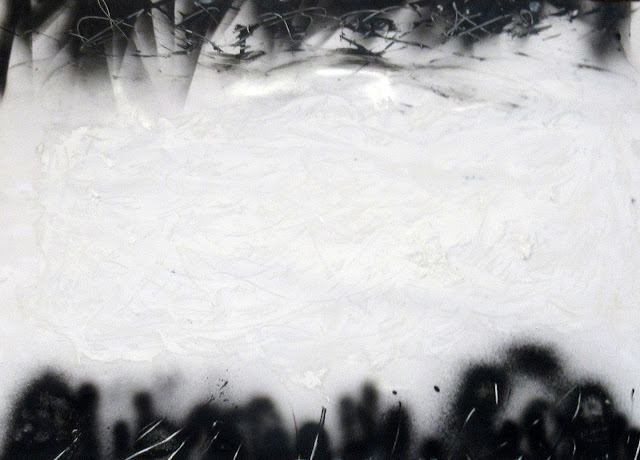
Boundary End by Nicola Tassie:
A site-specific piece comprising 60 individual thrown ceramic forms tightly arranged together. The forms at the base are conventional and familiar in their shape and reference domestic vessels. Towards the top of the structure the shapes become more organic, rounded in shape, softly pressing and moulding against each other and the wall of All Saint Church.
Tassie here presents a confronting piece that provides a barrier to our passage through the space. The concept of building a wall is politically symbolic but what does it mean here, where it is made of fragile ceramic material, and where the top of the wall appears malleable. Boundart End questions the idea of the spaces we inhabit and the boundaries that are erected between communities and people and forces us to think about how we might negotiate this and other physical and cultural boundaries.
Outrage by Rebecca Griffiths:
Outrage imagines a future landscape in which remnants of the nuclear power industry have been dredged from the North Sea.
The industrial forms have become encrusted with natural and toxic speciments. Molluscs have clung to surfaces, and liquids have settled into the grooves and recesses. These forms sit alongside extruded cables and fragile casts taken from the Suffolk shoreline.
Griffiths began to develop Outage on a residency at the Red House in Aldeburgh Suffolk. There, she explored the megastructure of Sizewell B nuclear power station. Her reflections on its current and future impact on the decline of coastal environment offered inspiration for this new body of work.







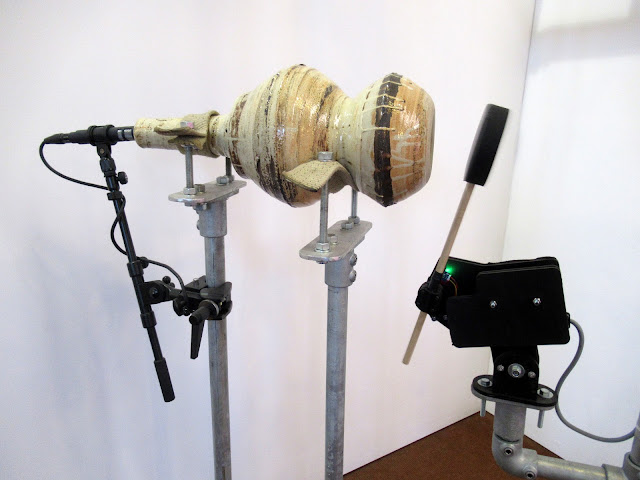



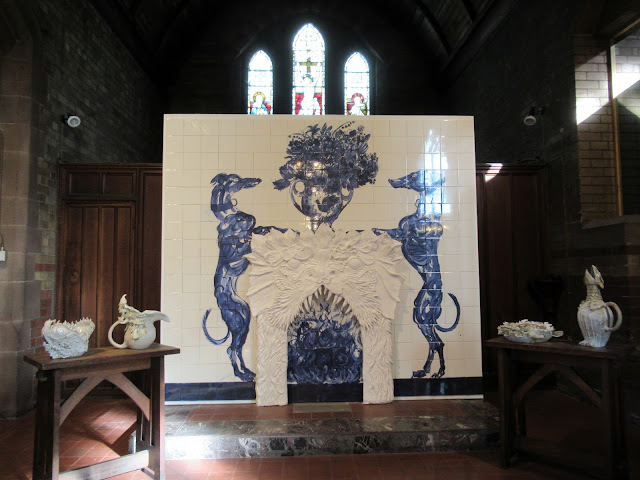


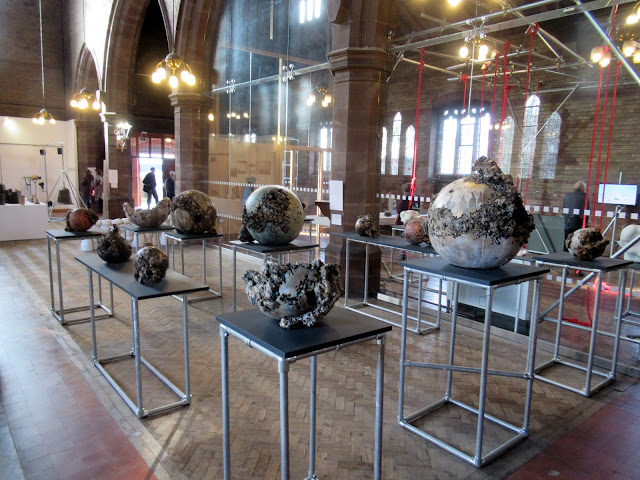


























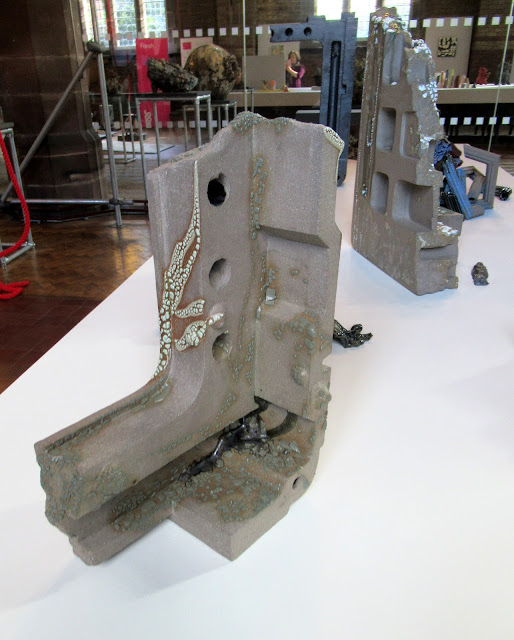
No comments:
Post a Comment